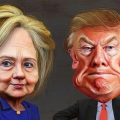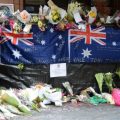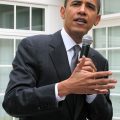Leo 2016
President Obama recently said “It’s not just a choice between parties or policies; the usual debates between left and right. This is a more fundamental choice – about who we are as a people, and whether we stay true to this great American experiment in self-government.” He was, of course, talking about the upcoming 2016 US elections. Since there is an astrological model that supports this idea, I agree with him. So what can we learn by using this technique? Who is the USA? And why is this important now?

Senate building – Washington D.C.
The 72-year cycle for the US
In the 2016 Gemini post I applied a 72-year cycle to the UK chart. Now, the time is right to look at the US in the same way. Below is what is known as the ‘Sibly Chart’ for the USA. There are various schools of thought as to whether this chart is a valid one as there are many that could be used for the USA. I have worked with this one for a long time and find that it corresponds well to what is going on in reality (whatever that is!). Astrologers often match a chart to current happenings to validate these correspondences and thereby justify their choice of a particular horoscope. So I want to use this chart to highlight at what point the US is in this particular cycle method. If we look back at the history it can help us make better decisions for the future. Assuming that cycles repeat symbolically rather than literally, we can use these symbols to suggest positive plans for future development. It is a way of looking back and learning from past mistakes. I have mentioned this method often, as I think it is an invaluable model not only for people, but also for companies and countries.
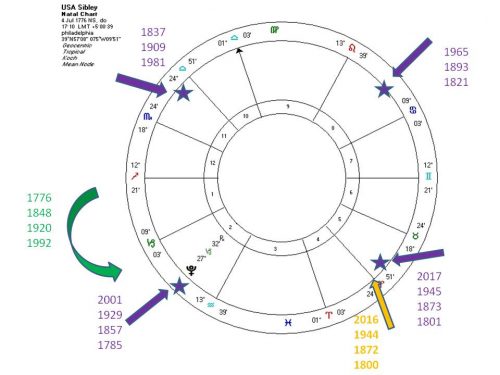
The USA chart showing important dates
Highlighted in this chart are 3 things:
- The start of each 72-year cycle staring at 4 July 1776 – green which I will not discuss here.
- The purple stars which are dates that the planet Pluto is triggered – 4 times each cycle in this case.
- Years in yellow which highlight the start of the 5th phase in each cycle. The Leo phase.
The Leo phase
I have written about the Leo phase before in relation to people. Applying it to a country, in this case the US, I hope you can see that as of July 4th (the US birthday) this year, the US entered the Leo or 5th 6-year phase represented by our sign of the month. The previous 5th phases started in 1944, 1872 and 1800. Leo is a sign that craves attention, and it revels in the spotlight. For people, this phase – from age 24-30 – is a time to put your own stamp on things and be true to your heart in what you produce. It should be a creative, playful and generous phase where we shine in showing off our very own creations. There is an element of risk-taking and a focus on leadership in this phase too. In companies I have noticed a need to reaffirm the identity of the company – who are we at heart? What do we want to be seen as? What do we create? This should be the same for countries. This is why I think Obama is right. The next 6 years will be about this “who are we as a people?” What is the heart of the US? Where and how do we want to shine?
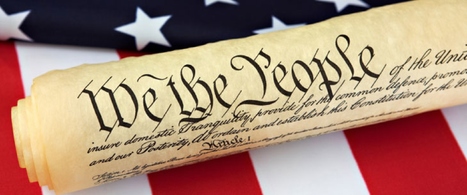
So what happened in previous Leo phases?
1800: It was interesting to discover that 1800 was the year that Federal Government moved from Philadelphia to Washington DC. The first president to live in the, as yet unfinished, White House, John Adams, also took up residence during this year. Although George Washington carries the name of the then new village and oversaw many of the buildings, he died in 1800 before anyone moved into the White House. Thomas Jefferson was involved in many of the decisions taken at the time too. He referred to the newly built Capitol Building, one of the more famous buildings in the world, as “the first temple dedicated to the sovereignty of the people.” Both Jefferson and Washington were determined that the United States Capitol, also referred to as ‘The Temple of Liberty’ would represent America’s new political and social order. So 1800 is a year when Federal Government gained a home and an identity in the form of many fine buildings that put it in the global spotlight. Not that everyone was happy with the amount of power the Federal Government was gaining – a theme that is relevant today.
Another theme that may be noteworthy for 2016 is ‘difficult’ elections. In 1800, voting took place in December to elect a President. However due to the fact that the vote was tied between Jefferson and Aaron Burr, balloting was extended and it was not known until February 1801 that Jefferson had been elected President with Burr becoming Vice President. Shades of difficulties to come in the 2016 elections?
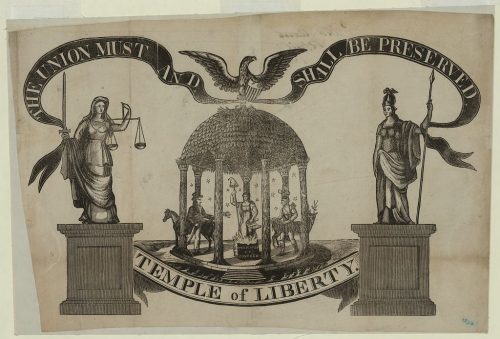
1872: This was the first year a woman ran for the US presidency (shades of Hillary?) even though women could not yet vote. Her name was Victoria Woodhull, (interesting that she is not well-known – by me anyway, I had never heard of her). She was a fascinating character, who was a radical campaigner for equal rights, especially for women, including their choices in marriage and whether to have children. Considering her horrific background, this is understandable. My favourite thing about her was that she had been in a fortune-telling show and gave clairvoyant demonstrations!
Because she was too young at the time of the elections (under 35), there was controversy about whether she was eligible to run. Nevertheless, she seems to have stood, with varying reports about how many votes she received (one account says more than none!) Ulysses S. Grant easily won the vote. Unfortunately his main competitor, Horace Greeley, who advocated a more honest government (shades of Feel the Bern?) and who had been pilloried in the press, died before the votes were counted – again ‘difficult’ elections.
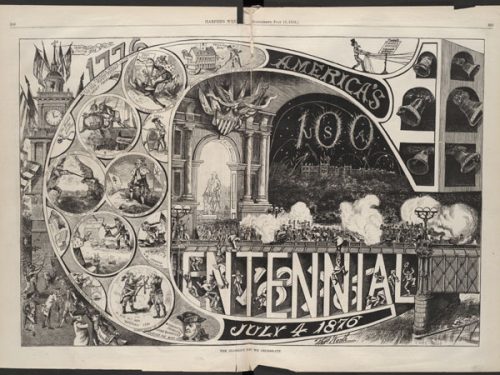
Image from harvard.edu – promotion for the US Centennial.
Perhaps more importantly for a Leo phase, the US turned 100 in this period and in 1876 a world fair – The Philadelphia Centennial Exhibition – was held. A quote from a history site emphasises the world stage/creative theme: ” … its notable public showings include Alexander Graham Bell, with his newly patented telephone, Thomas Edison with the megaphone and phonograph, Westinghouse with the air brake, the first public showing of the top portion of the Statue of Liberty and the Corliss Engine, a steam engine so large it powered the entire exhibition and proved to the 34 nations and 20 colonies who exhibited, that not only was the U.S.A. an equal on a par with European nations in manufactured goods, but had surpassed them in innovation.” The genius of US inventors was being noticed around the world. The US must have been feeling proud!
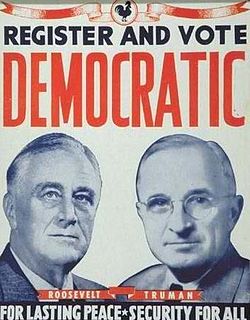
1944: Of course 1944 was a devastating year for most of the world and this was the backdrop to the elections that the democrat Franklin D Roosevelt won, making it his fourth term in office. Unfortunately he died just six months after being re-elected and Harry S. Truman took over. ( I hope this is not shades of things to come). Strong leadership would be required to rebuild the US after a long war, although it suffered less than most countries that were involved. After World War II, this Leo phase would definitely solidify America’s role and part of her identity as a global power. The Soviet Union was the other superpower, but the capitalist, liberal United States was seen as ‘Top Dog’ by many. Domestically, there was a belief in the promise of ‘The American Dream’. The GI Bill of Rights passed in 1944, provided money for veterans to attend college, to purchase homes, and to buy farms, leading to a large population growth (Leo is also about creating children!) The economic boom of post-war America helped to change how Americans viewed themselves.
Another post war result was that Federal Government had gained more wide-ranging powers. Again this was not always appreciated and is part of the argument today.
Now 2016: During previous Leo phases, there was an element of showing how great the US is and hope was created domestically. At the first Leo phase, a strategy of bringing states together under a federal government was brought to fruition. After WWII there was a wish to work together too – this time globally. So an isolationist policy seems not to fit.
The US is often in the global spotlight, especially in an election year (ad nauseam!) However this year does seem to be an exceptionally strange and negative bun-fight. Donald Trump, having Leo rising, has somehow managed to tune in to the right theme for a Leo phase. ‘Let’s make America great again’ is actually a good phrase for this period. Perhaps this is why it has captured the imagination (and also been used against him). But of course that’s just a slogan – there needs to be something to be proud about. I spent more time on Trump in an earlier post.
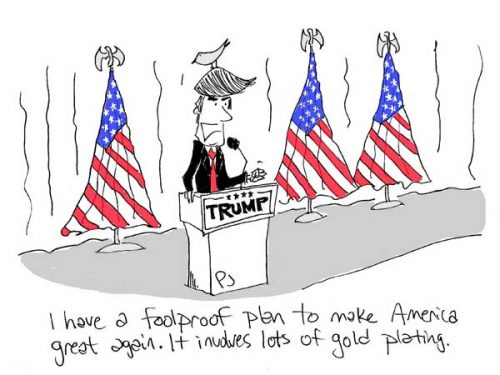
The US needs to show good leadership at global level. It became known for this after WWII and the US was instrumental in helping to rebuild Europe with the Marshall plan, which began in 1948. Perhaps it is time for the US to take this role again, after Brexit and the EU problems. And somehow the ‘American Dream’ needs to be reawakened.
But – oh dear – Pluto
One of the problems for the US at this point in the cycle is that within a year of the start of each Leo phase, Pluto gets triggered (shown by years in orange in the table below), bringing deep and sometimes ugly issues to the surface. Pluto, the ruler of death has highlighted the death of leaders at this stage in both 1872 and 1945. Pluto rules many themes, not least of which are large amounts of money and the financial world. Money = power in this chart. These areas are of particular relevance for the US. The points represented by the 4 stars in the horoscope above are part of a more detailed cycle, however I will just look at these main ones. The best way to summarise this is by using a table in which I highlight a few events so a pattern can emerge. That will give some ideas for themes for the 2017 trigger.
| 1785 | The Dollar is chosen as the monetary unit of the US. A free trade agreement between the US and Prussia. |
| 1801 | Difficult elections as mentioned above were solved and Jefferson becomes President. 1st US foreign war – Barbary pirates of Tripoli declare war on US. |
| 1821 | Mexico gained independence from Spain so US and Mexico talks were held – agreement made – American settlers had to abide by Mexican laws and had to learn Spanish. Slavery was illegal in Mexico and women could vote and own land (unlike US). |
| 1837 | The Panic of 1837 – New York banks fail and high unemployment. |
| 1857 | The Panic of 1857 – 1st world-wide economic crisis after finding of gold declining. Dred Scott v. Sanford: The Supreme Court of the United States ruled that Blacks were not citizens and slaves couldn’t sue for freedom. This set the scene for the American Civil War. |
| 1873 | The Panic of 1873 financial crisis – known as ‘The Great Depression’ at the time. This was after much speculation on railroads in the US although the crisis was global. |
| 1893 | The Panic of 1893 – another serious financial depression – gold standard also involved and railroad investment |
| 1909 | The Ballinger affair – a row over conservation and private land which led to a split of the Republican party. Dollar Diplomacy very active – a way of investing in opportunities abroad. |
| 1929 | Wall Street Crash – ‘The Great Depression’, Al Capone and National Crime Syndicate. |
| 1945 | WWII. FD Roosevelt dies. Hiroshima. It was clear that post-war privilege was for white males and much civil unrest resulted from this. |
| 1965 | Middle of the Vietnam war and much protest. Malcolm X assassinated. Martin Luther King Jr marches. |
| 1981 | President Reagan shot. Start of the ‘Severe early 80’s recession’. First recognised case of AIDS. |
| 2001 | 9/11. Early 2000 recession starts. Afghanistan invasion and bombing of Iraq. Enron bankruptcy – largest so far in history. |
| 2017 | ? |
Although a lot of positive things happened – which I usually highlight, two of the main themes that come to light are financial collapses and war. Protests are also rife. These were challenging years. Below in the website section I have posted a list of podcasts – all of which talk of financial collapse. These are from both financial experts and more psychic people. All say they are surprised that a major financial collapse hasn’t happened already, only because governments are not letting that happen. Most say that because of this, timing of when it will happen (and it must) is difficult. The main problem (again) seems to be the gold standard. Looking at this table, I would suggest that 2017 would be crunch time. Unrest, war and financial problems all seem to come to a head at these parts of the cycle.
Pluto can suggest all these negative themes however it does gives us solutions too – but can we go there? Pluto demands total transformation and fundamental restructuring. Crime, war and big finance must be dealt with in a different way or we will repeat these same themes negatively. This is a revisiting of 9/11 and the vitriol and hatred associated with that. Pluto is about power and who has it. Can we move beyond an abusing of power? A difficult ask for many. But 2017 offers the opportunity.

Empty Sky – New Jersey September 11 Memorial designed by Jessica Jamroz and Frederic Schwartz.
So who should the US be?
I maintain that, as we all do, a country also has a vocation. A role and a place in the world and a special mission or calling. For me, the US vocation would be described by four archetypes : Cancer – her Sun sign, plus Jupiter, Saturn and Ceres. My free advice to anyone running for President would be, during this Leo phase, to tune into this DNA and show off these qualities in a positive light and use them at global level. This would mean highlighting …
The sign of Cancer: America was founded by people looking for a safe home. This is part of the DNA. Today, this needs to mean not only being patriotic and taking care of the whole US family, but also being a protector in a global sense. Cancer looks after children and feeds the world. It is a nurturing energy – the challenge is to home and feed people and not just in the US, but that would be a good place to start. These are good themes for campaigns. After WWII, the government was generous in this area – a good Leo quality.
Jupiter has the potential to practise good, visionary politics. Used well, this talent could mean that the world would listen to a US vision and strategy for a better world.
Saturn would mean a responsible, grown-up campaign and solid plans to reach a global goal of responsibility in all areas. In combination with Ceres this means one appropriate goal would be looking after the environment. Another would be empowering women to help the world. The US has the capacity to operate as a wise elder on the world stage but that means calling a halt to blaming other countries and taking responsibility for her role in any conflict situations.
One of the other things this Saturn theme could represent, is the need to produce concrete products. The US used to have an advantage in this area with having such a huge domestic market, however global trade has lessened this advantage. No wonder the US is keen to get good trading agreements for their own companies. However I would suggest a different strategy. The Leo phase requires creativity in making actual products again and getting attention for being exceptional in manufacturing.

Columbia’s Easter Bonnet’ on the cover of Puck, the first successful humorous magazine in the US.
Will the real USA please stand up!
The USA is called to be an expert on the world stage in being protective, practical and entrepreneurial, in food production, space travel, helping the disenfranchised and green energy, to name a few. I touched on this in an earlier post about nation branding. But the negative expressions of these archetypes need to be overcome. Greed, isolationism, white male privilege and authoritarianism need to go!
Faye Blake-Cossar
Websites of the Month
An interesting site on the building of Washington DC.
A rather long, but very interesting article from the American Studies Journal on ‘The American National Identity in a Globalized World’.
Quotes of the Month
“If history judged nations by their pet theories, no one could ever doubt that Americans were creative.” From: The Man Who Wouldn’t Stand Up by Jacob M. Appel, American author, bioethicist, physician, lawyer and social critic.
“Americans may have no identity, but they do have wonderful teeth.”
Jean Baudrillard, French sociologist, philosopher, cultural theorist, political commentator, and photographer.





